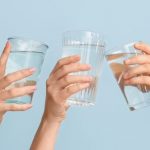 Crime
Crime  Crime
Crime  Technology
Technology 10 Hilariously Over-Engineered Solutions to Simple Problems
 Miscellaneous
Miscellaneous 10 Ironic News Stories Straight out of an Alanis Morissette Song
 Politics
Politics 10 Lesser-Known Far-Right Groups of the 21st Century
 History
History Ten Revealing Facts about Daily Domestic Life in the Old West
 Weird Stuff
Weird Stuff 10 Everyday Products Surprisingly Made by Inmates
 Movies and TV
Movies and TV 10 Actors Dragged out of Retirement for One Key Role
 Creepy
Creepy 10 Lesser-Known Shapeshifter Legends from Around the World
 Animals
Animals 10 Amazing Animal Tales from the Ancient World
 Gaming
Gaming 10 Game Characters Everyone Hated Playing
 Crime
Crime 10 Terrifying Serial Killers from Centuries Ago
 Technology
Technology 10 Hilariously Over-Engineered Solutions to Simple Problems
 Miscellaneous
Miscellaneous 10 Ironic News Stories Straight out of an Alanis Morissette Song
Who's Behind Listverse?

Jamie Frater
Head Editor
Jamie founded Listverse due to an insatiable desire to share fascinating, obscure, and bizarre facts. He has been a guest speaker on numerous national radio and television stations and is a five time published author.
More About Us Politics
Politics 10 Lesser-Known Far-Right Groups of the 21st Century
 History
History Ten Revealing Facts about Daily Domestic Life in the Old West
 Weird Stuff
Weird Stuff 10 Everyday Products Surprisingly Made by Inmates
 Movies and TV
Movies and TV 10 Actors Dragged out of Retirement for One Key Role
 Creepy
Creepy 10 Lesser-Known Shapeshifter Legends from Around the World
 Animals
Animals 10 Amazing Animal Tales from the Ancient World
 Gaming
Gaming 10 Game Characters Everyone Hated Playing
10 Shocking Water Usage Statistics
There is a popular saying that water has no enemy. This is because you cannot be smarter than water. You need water to brush your teeth, take your bath, wash your clothes, and so much more. You need water to prepare your meals, and you also need to drink water to stay alive. While we can readily accept some statistics about water usage, others are downright bizarre and seemingly unbelievable. These are ten shocking water usage statistics.
Related: Ten Strange Facts About Ambergris
10 One Farming Family Uses More Water Than All of Las Vegas
Farms need water to grow crops. Most of us can accept this as a reasonable use of water. Humanity needs the food that is grown on these farms—from rice to vegetables, carrots, and so on. We should never complain about a farm’s water use and might even gladly turn a blind eye if some water is wasted because we do not want to be the ones arguing with the farmers who feed us.
However, there are some bizarre statistics regarding water usage that we cannot help but notice. During a 2022 investigation, a single family that owns large swaths of farmland was found to use more water than the entire city of Las Vegas—we are talking about a whole city. The Abbati family farmland consumed 260,000 acre-feet of water, whereas the entire Las Vegas metropolitan area used around 200,000 acre-feet of water in 2022. One acre-foot is about 326,000 gallons (1.23 million liters).[1]
9 It Takes One Gallon of Water to Produce a Single Almond
We love our nuts, but do we really know the cost of each nut?. We are not talking about the monetary costs; rather, we are talking about the cost in terms of water usage. A single almond requires just over one gallon (3.78 liters) of water to grow. A 2017 Science Direct article bumped that up to 3 gallons (11.4 liters) per almond. Either way, the total amount of water that California requires to grow all the almonds the state exports in a single year could provide water for everyone for all kinds of uses in Los Angeles for three years.
In fact, almond growers account for almost 10% of all of California’s water usage in a year. The irony in this is that this seemingly justifiable water usage makes water scarce elsewhere within the state. Environmental groups have repeatedly urged the Californian government to limit growing crops like almonds and alfalfa as the agriculture industry guzzles most of the state’s supply of water at the expense of residents. Imagine how much water was used to grow the 1.2 million tons (1.1 million metric tons) of almonds harvested in the 2022/2023 growing season![2]
8 Golf Courses Use Billions of Gallons of Water Per Day
We are finding it tough to justify this one.
Golf, with its origins tracing back to 15th century Scotland, has evolved from a simple pastime to a globally celebrated sport. Its history is steeped in the rolling hills and lush landscapes of Scotland, where shepherds would use sticks to hit stones into rabbit holes, marking the humble beginnings of the game. Over time, golf grew in popularity, spreading throughout Europe and eventually crossing oceans to the United States and beyond. The creation of standardized rules in the 18th century, such as those by the Honourable Company of Edinburgh Golfers, laid the foundation for the modern game.
It’s estimated that almost 40,000 golf courses have been opened in 206 countries across the globe. The United States has the most, with more than 16,000 golf courses. So, how much water is used?
Naturally, most golf courses are made with grass. It takes a lot of water to maintain these courses and keep the green grass thriving. An average golfer already knows that golf courses consume a lot of water, but what you may not know is the exact quantity. It takes 2 billion gallons (7.5 billion liters) of water to maintain all the golf courses across the world per day. This is a lot of water for sport.[3]
7 One Pound of Beef Requires 1,799 Gallons of Water
The global average water footprint of beef is pretty high. Most (98%) of the water is used to water the grass, forage, and feed that cattle consume over their lifetime. Depending on their diets, this can either be green (rainwater) or blue (ground or surface) water. For most of their lives, cattle rely predominantly on green water—water from renewable resources. The diets for their last four to six months consist of feed like corn, soy, and other grains. These crops gulp a substantial percentage of this water footprint as they use more groundwater (blue water) to irrigate.
In the United States, one pound of steak requires an average of 1,799 gallons (6,810 liters) of water. The sheer amount of water used for meat production has raised questions about the sustainability of overly meaty diets. It has also prompted research into new methods of meat production that would rely on less water.[4]
6 Most Water in Homes Goes Down the Drain
Humanity practically wastes water. This is the conclusion we have been forced to come to. Otherwise, how else do we explain the fact that 95% of the water that enters our homes goes down the drain? The situation is better for advanced countries as most of the water is recycled back for use.
For instance, Israel recycles most of its sewage (up to 80%) for use in irrigation. In the United States, one billion gallons (3.78 billion liters) of treated wastewater is recycled for use to meet non-portable water needs. On the other hand, developing countries in Africa lack the technology to recycle water, which significantly contributes to the shortage of freshwater supply.[5]
5 Americans Drink More Than One Billion Glasses of Tap Water a Day
So, we’ve often heard that our bodies mostly consist of water. Actually, 66% percent of the human body and 75% percent of the human brain are made up of water. Water is life, and a human being must drink 10 cups (2.5 quarts) of water per day through food and drink to maintain health.
The good news is that drinking water in the United States is among the safest in the world, as the Safe Drinking Water Act makes drinking water safe. This is why Americans confidently drink more than one billion glasses of tap water a day. Although the quantity of bottled water consumed by Americans is more than five times this rate.[6]
4 It Takes 37 Gallons of Water to Make a Roll of Toilet Paper
Toilet paper is so popular in American culture that it is one of the foremost necessities. While many countries have gone for the bidet, toilet paper is in vogue in the United States. We know that if only consumers learned that it takes 37 gallons (140 liters) of water to make a single toilet roll, maybe their choices would be different. And to add to the water footprint, that same single roll of TP also requires 1.3 kilowatt/hours (KWh) of electricity and 1.5 pounds (0.68 kilograms) of wood to make.
Americans consume the most toilet paper in the world—about 34 million rolls per day. Annually, this amounts to about 36.5 billion rolls. American toilet paper’s annual use requires about 473,587,500,000 gallons (1.79 trillion liters) of water to make! No wonder the United States used the most water in the world in the year 2022; the second country was Canada, and the third country was New Zealand, which shows that population has nothing to do with water usage.[7]
3 Global Fresh Water Demand Will Outstrip Supply by 2030
Environmentalists believe that the world is facing an imminent water crisis due to the uncontrolled exploitation of fresh water, especially in developing countries where less than 10% of used water is recycled for future uses. The approach of humans to freshwater usage is that it will always be available and keep coming from where it comes from. Still, sadly, if we are to follow the opinion of experts, this will not be the case.
By 2030, global freshwater demand will outstrip supply. This is because freshwater is being consumed at a faster rate than it can be replaced. There is a lot to be done on the part of the government to avoid this ugly trend. Firstly, the government needs to review its misdirected agricultural subsidies and mining permits that provide the much-needed excuse for water to be wasted where alternatives could lead to the conservation of water resources. Moreover, the government must take steps to address the billions of gallons of water that are wasted daily as a result of leakages and poor water piping systems.[8]
2 Starbucks Used to Waste Six Million Gallons of Water a Day
Starbucks once had a terrible policy in place at its coffeehouses. In 2008, it was discovered that Starbucks ordered employees to keep a sink running non-stop to wash cups, plates, etc., as a time saver. The sink was called a dipper well, and the logic behind this policy was that if the sink never stopped running, it couldn’t form germs. It was estimated that the total water wasted worldwide at Starbucks outlets as a result of this policy was 6 million gallons a day (22.7 million liters), which is more than enough to meet the needs of a small nation.
At the time this discovery was made, Nambia, a nation with a small population in Africa, was battling with drought. Water companies joined green activists in criticizing the firm for harming the environment and wasting a vital natural resource. The response of experts to the controversy is that leaving taps running for hygiene reasons was “nonsense.”[9]
1 Reverse Osmosis Systems Waste Gallons of Water
A point-of-use reverse osmosis (RO) system is a water filtration device that is connected to a single fixture (for instance, under the kitchen sink) and uses the process of reverse osmosis to remove contaminants from water supplied to that fixture. The process of reverse osmosis forces water through a semi-permeable membrane, creating a stream of treated water called “permeate” and a stream of rejected water called “concentrate” or “brine.”
Reverse osmosis systems can be found in both residential and commercial settings although they are more common at the former. While reverse osmosis systems are desirable and can remove water contaminants such as lead, bacteria, and viruses, they generate a lot of waste. A typical system will generate 5 gallons ( 18.9 liters) of wastewater for every gallon of clean water it produces. This cannot let us classify the system as efficient.[10]








